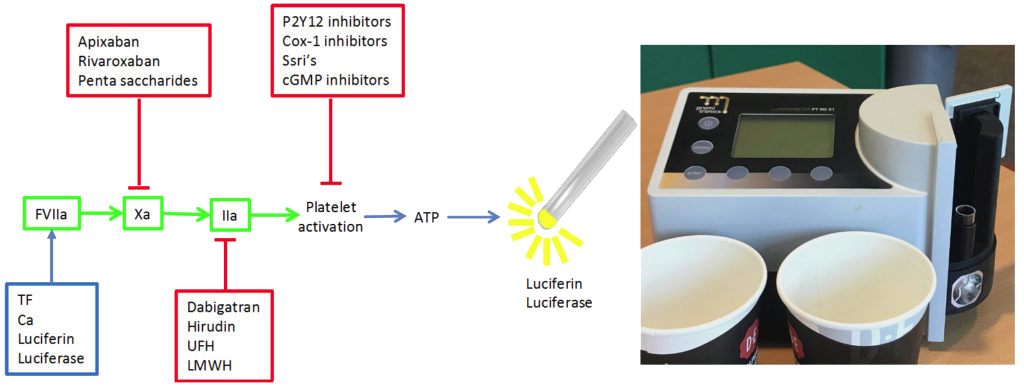P-Light-express Point of Care Medication monitoring (PPP, PRP, WB)
There are no artificial phospholipids supplied, which guarantees that the coagulation factor complexes need to move to their native surfaces (figure 2). Another strength of this test is the robustness of the test, because all reaction mixtures are prepared at standard conditions and there is only one handling step for the operator of the test, which is addition of whole blood to the mix we have reduced the clinical handling procedures to one step. This has resulted in a high reproducibility (CV <5%), a low variation between operators (<10%), an easy access to a near patient / point of care setting, a minimal blood volume requirement, opportunities for general practitioner use and a reaction time that is short enough for emergency settings.

Figure 2 With some modifications, the same platform can be used for quantification of anti-coagulant medication and anti-platelet medication in blood of patients who are on treatment. It may also be used to study side effects of other medication, such as anesthetics, on platelet function or on coagulation inhibition Luminescence intensity kinetics will be monitored on a dedicated Luminometer, which has been recently been developed for Synapse to study platelet function monitoring in a clinical setting.
The point of care machine to monitor the interaction between coagulation and platelet function has just been produced for this study


